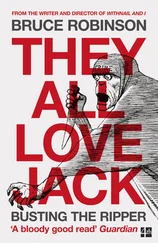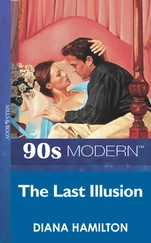Bruce Hood - The Self Illusion
Здесь есть возможность читать онлайн «Bruce Hood - The Self Illusion» весь текст электронной книги совершенно бесплатно (целиком полную версию без сокращений). В некоторых случаях можно слушать аудио, скачать через торрент в формате fb2 и присутствует краткое содержание. ISBN: , Издательство: Constable & Robinson, Жанр: Старинная литература, на английском языке. Описание произведения, (предисловие) а так же отзывы посетителей доступны на портале библиотеки ЛибКат.
- Название:The Self Illusion
- Автор:
- Издательство:Constable & Robinson
- Жанр:
- Год:неизвестен
- ISBN:9781780331379
- Рейтинг книги:5 / 5. Голосов: 1
-
Избранное:Добавить в избранное
- Отзывы:
-
Ваша оценка:
- 100
- 1
- 2
- 3
- 4
- 5
The Self Illusion: краткое содержание, описание и аннотация
Предлагаем к чтению аннотацию, описание, краткое содержание или предисловие (зависит от того, что написал сам автор книги «The Self Illusion»). Если вы не нашли необходимую информацию о книге — напишите в комментариях, мы постараемся отыскать её.
The Self Illusion — читать онлайн бесплатно полную книгу (весь текст) целиком
Ниже представлен текст книги, разбитый по страницам. Система сохранения места последней прочитанной страницы, позволяет с удобством читать онлайн бесплатно книгу «The Self Illusion», без необходимости каждый раз заново искать на чём Вы остановились. Поставьте закладку, и сможете в любой момент перейти на страницу, на которой закончили чтение.
Интервал:
Закладка:
4. N. Levy, Neuroethics: Challenges for the 21st Century (Cambridge: Cambridge University Press, 2007).
5. B. de Spinoza, A Spinoza Reader: The Ethics and Other Works , ed. and trans. E. Curley (Princeton: Princeton University Press, 1994).
6. Dennett is quoted in E. Taylor, Mind Programming: From Persuasion and Brainwashing, to Self-Help and Practical Metaphysics (San Diego, CA: Hay House, 2009).
7. E. R. Macagno, V. Lopresti and C. Levinthal, ‘Structure and development of neuronal connections in isogenic organisms: Variations and similarities in the optic system of Daphnia magna’, Proceedings of the National Academy of Sciences of the United States of America , 70 (1973), 57–61.
8. H. Putnam, ‘Psychological predicates’, in W. H. Capitan and D. D. Merrill (eds), Art, Mind, and Religion (Pittsburgh, PA: University of Pittsburgh Press, 1967), 37–48.
9. This example comes from Gazzaniga’s Gifford lecture where he introduced the work of neurophysiologist Eve Marder to demonstrate the principle of Putnam’s multiple realizability; J. M. Goaillard, A. L. Taylor, D. J. Schulz and E. Marder, ‘Functional consequences of animal-to-animal variation in circuit parameters’, Nature. Neuroscience , 12 (2009), 1424–30.
10. B. Libet, C. Gleason, E. Wright and D. Pearal, ‘Time of unconscious intention to act in relation to onset of cerebral activity (readiness-potential)’, Brain , 106 (1983), 623–42.
11. C. S. Soon, M. Brass, H.-J. Heinze and J.-D. Haynes, ‘Unconscious determinants of free decisions in the human brain’, Nature Neuroscience , 11 (2008), 543–5.
12. G. Ryle, The Concept of Mind (London: Peregrine, 1949), 186–9.
13. F. Assal, S. Schwartz and P. Vuilleumier, ‘Moving with or without will: Functional neural correlates of alien hand syndrome’, Annals of Neurology , 62 (2007), 301–6.
14. See M. S. Gazzaniga, ‘Forty-five years of split-brain research and still going strong’, Nature Reviews Neuroscience , 6:8 (August 2005), 653–9, for Gazzaniga’s reflection of his work in split-brain research.
15. F. Lhermitte, ‘Human autonomy and the frontal lobes. Part II: Patient behavior in complex and social situations: The “environmental dependency syndrome”’, Annals of Neurology , 19 (1986), 335–43.
16. F. Lhermitte, ‘“Utilization behaviour” and its relation to lesions of the frontal lobes’, Brain , 106 (1983), 237–55.
17. D. Wegner, The Illusion of Conscious Will (Cambridge, MA: MIT, 2002).
18. D. Wegner, ‘Self is magic’, in J. C. Kaufman and R. F. Baumeister (eds), Are We Free? Psychology and Free Will (New York, NY: Oxford University Press, 2008).
19. J. Cloutier and C. N. Macrae, ‘The feeling of choosing: Self-involvement and the cognitive status of things past’, Consciousness and Cognition , 17 (2008), 125–35.
20. L. M. Goff and H. L. Roediger III, ‘Imagination inflation for action events: Repeated imaginings lead to illusory recollections’, Memory and Cognition , 26 (1998), 20–33.
21. L. Lindner, G. Echerhoff, P. S. R. Davidson and M. Brand, ‘Observation inflation: Your actions become mine’, Psychological Science , 21 (2010), 1291–9.
22. E. R. Hilgard, Hypnotic Suggestibility (New York, NY: Harcout Brace and World, 1965).
23. Hilgard (1965).
24. P. Rainville, R. K. Hofbauer, T. Paus, G. H. Duncan, M. C. Bushnell and D. D. Price, ‘Cerebral mechanisms of hypnotic induction and suggestion’, Journal of Cognitive Neuroscience , 11 (1999), 110–122.
25. T. R. Sarbin, ‘Contributions to role-taking. I. Hypnotic behavior’, Psychological Review , 57 (1950), 255–70.
26. S. Vyse, Believing in Magic: The Psychology of Superstition (Oxford: Oxford University Press, 1997).
27. K. Ono, ‘Superstitious behavior in humans’, Journal of the Experimental Analysis of Behavior , 47 (1987), 261–71.
28. Daily Mail (27 January 2009).
29. B. Malinowski, ‘Fishing in the Trobriand Islands’, Man , 18 (1918), 87–92.
30. S. S. Dickerson and M. E. Kemeny, ‘Acute stressors and cortisol responses: A theoretical integration and synthesis of laboratory research’, Psychological Bulletin , 130 (2004), 355–91.
31. G. Keinan, ‘The effects of stress and desire for control on superstitious behavior’, Personality and Social Psychology Bulletin , 28 (2002), 102–8.
32. Independent (9 April 2007).
33. The primatologist Josep Call told the author about this phenomenon.
34. M. M. Robertson and A. E. Cavanna, ‘The disaster was my fault’, Neurocase , 13 (2007), 446–51.
35. I. Osborn, Tormenting Thoughts and Secret Rituals: The Hidden Epidemic of Obsessive-Compulsive Disorder (New York, NY: Dell, 1998).
36. T. E. Oltmanns, J. M. Neale and G. C. Davison, Case Studies in Abnormal Psychology (3rd ed., New York, NY: Wiley, 1991).
37. A. M. Graybiel and S. L. Rauch, ‘Toward a neurobiology of obsessive-compulsive disorder’, Neuron , 28 (2000), 343–7.
38. M. Field, ‘Impulsivity, restraint and ego depletion in heavy drinkers’, Presentation at the Bristol Psychopharmacology Research Network: Workshop 3, Bristol Institute for Advanced Studies (1 December 2010).
39. N. L. Mead, J. L. Alquist and R. F. Baumeister, ‘Ego depletion and the limited resource model of self-control’, in R. R. Hassin, K. N. Ochsner and Y. Trope (eds), Self Control in Society, Mind and Brain (Oxford: Oxford University Press, 2010), 375–88.
40. R. F. Baumeister, The Self in Social Psychology (Philadelphia, PA: Psychology Press, 1999).
41. M. Muraven and R. F. Baumeister, ‘Self-regulation and depletion of limited resources: Does self-control resemble a muscle?’, Psychological Bulletin , 126 (2000), 247–59.
42. J. Rotton, ‘Affective and cognitive consequences of malodorous pollution’, Basic Applied Social Psychology , 4 (1983), 171–91; B. J. Schmeichel, K. D. Vohs and R. F. Baumeister, ‘Intellectual performance and ego depletion: Role of the self in logical reasoning and other information processing’, Journal of Personality and Social Psychology , 85 (2003), 33–46; G. W. Evans, ‘Behavioral and physiological consequences of crowding in humans’, Journal of Applied Social Psychology , 9 (1969), 27–49; D. C. Glass and J. E. Singer, Urban Stress: Experiments on Noise and Social Stressors (New York, NY: Academic Press, 1972).
43. D. Kahan, J. Polivy and C. P. Herman, ‘Conformity and dietary disinhibition: A test of the ego-strength model of self control’, International Journal of Eating Disorders , 32 (2003), 165–71; M. Muraven, R. L. Collins and K. Neinhaus, ‘Self-control and alcohol restraint: An initial application of the self-control strength model’, Psychology of Addictive Behaviors , 16 (2002), 113–120; K. D. Vohs, R. F. Baumeister, B. J. Schmeichel, J. M. Twenge, N. M. Nelson and D. Tice, ‘Mating choices impairs subsequent self-control: A limited resource account of decision making, self-regulation, and active initiative’, Journal of Personality and Social Psychology , 94 (2008), 883–98.
44. K. D. Vohs, R. F. Baumeister and N. J. Ciarocco, ‘Self-regulation and self-presentation: Regulatory resource depletion impairs impression management and effortful self-presentation depletes regulatory resources’, Journal of Personality and Social Psychology , 88 (2005), 632–57.
45. N. J. Ciarocco, K. Sommer and R. F. Baumeister, ‘Ostracism and ego depletion: The strains of silence’, Personality and Social Psychology Bulletin , 27 (2001), 1156–63.
Читать дальшеИнтервал:
Закладка:
Похожие книги на «The Self Illusion»
Представляем Вашему вниманию похожие книги на «The Self Illusion» списком для выбора. Мы отобрали схожую по названию и смыслу литературу в надежде предоставить читателям больше вариантов отыскать новые, интересные, ещё непрочитанные произведения.
Обсуждение, отзывы о книге «The Self Illusion» и просто собственные мнения читателей. Оставьте ваши комментарии, напишите, что Вы думаете о произведении, его смысле или главных героях. Укажите что конкретно понравилось, а что нет, и почему Вы так считаете.












